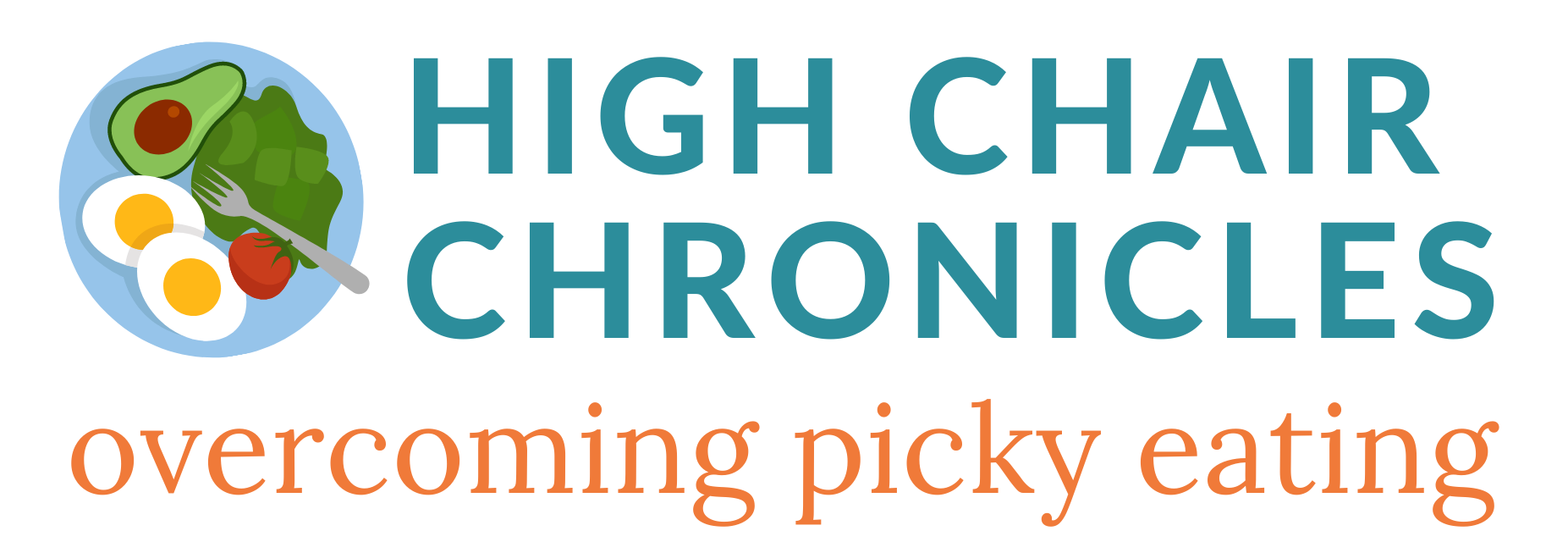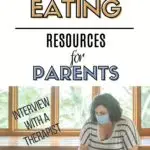If you’re dealing with a picky eater (which, you probably are, because, well, you’re here!!), you may be used to thinking about what to put in your little one’s mouth. But have you stopped to think about what already might be in there?
I’m talking about their tongue! Have you considered that a tongue tie could be at the root of your baby or toddler’s feeding issues?
I recently learned about the connection between tongue tie and picky eating from Kelly O’Brien Pahman, who is the founder of the Craniosacral Center of Grand Rapids. I am hoping this interview with Kelly can shine some light on your little one’s eating issues and help you get the support you need.
Make sure to read to the end to get links to helpful videos, resources, and courses.

Kelly, please tell me about your work with tongue tie as a craniosacral therapist
As a craniosacral therapist, doula, and mom of four, I’ve been working with families for years on resolving the issue of tongue tie - a condition where the connective tissue under the tongue is too short or too tight.
While I often work with families dealing with breastfeeding struggles with a baby who has a tongue tie, I’ve come to learn that tongue tie can often show up as picky eating issues a year or two down the road. Especially if your little one can only tolerate soft or processed foods, struggles with chewing, or has always struggled to gain weight, a tongue tie could be the culprit.
What is a tongue tie?
A tongue tie, also referred to as ankyloglossia, is when the frenulum (the small piece of connective tissue under your tongue) is tight or short, restricting the tongue’s movements. When the tongue doesn’t move like it should, so many aspects of eating and drinking are extremely difficult! What may look to us as parents like resistance or refusal may actually be a child struggling with oral-motor function.
What are some of the signs and symptoms of a tongue tie in a toddler?
- Preference for soft foods
- Preference for processed foods
- Unwilling or unable to eat certain foods, especially if they require chewing
- Child is a messy eater, with food often falling out of the mouth
- Food gets stuck or pocketed in the cheeks
- Gagging
- History of difficulty breastfeeding (either pain in mother or failure to gain weight)
- Dental difficulties - open bite, problems with tooth spacing
- Speech and language difficulties - stuttering, avoiding speech, inability to make certain sounds
Related article: Feeding Therapy For Picky Eater Toddlers
Is the tongue the root cause?
The name “tongue tie” gets us thinking that the main problem is the tongue itself. And, yes, the tongue maybe causing your child’s pickiness issues. But, what’s causing the tongue tie?
In my work as a craniosacral therapist, I’ve learned that a tongue tie is just the tip of the iceberg. What’s really going on is overly restricted midline tissue - tension along the entire spine, from the head down to the tailbone - causing various issues throughout the body.
Think of a soft silk scarf. It flows and moves easily. Now imagine a snag in that silk scarf that pulls a single thread in that fabric. Suddenly, it won’t lie flat, and you can see the result of the tension on that one thread through the entire piece in the ripples and buckles it makes.
That’s what midline tension does to a baby or child’s body. Often in babies, I can spot a tongue tie before even looking at their mouth at all, just by the way they lie down. You’ll often see tongue tie babies curled up in a c-shape with their head, arms and legs reaching over to one side. Others will have their arms above their head and their backs constantly arched. Some have shoulders pulled back together. That’s because with that one string pulled extra tight - their midline tissue - their body can’t lie flat and be comfortable.
I recently had an adult client who came to me for terrible migraines. After some craniosacral work, I noticed the telltale tension down the midline that comes with a tongue tie. When I mentioned it to her, she said she didn’t know, but she had always noticed that what other people ate as a normal bite was gigantic to her! Later, she asked her mom about it, who confirmed that she had a tongue tie at birth. The midwife had noticed and clipped it, but nursing was difficult and eating had always been a struggle. And 50 years later, she was finally working out the midline tension that had plagued her since birth.

Treating a tongue tie holistically
Parents whose child has a tongue tie will often be advised to get a tongue revision - a surgical procedure to “release” the overly tight tongue issue. But so often those revisions fail to make any difference in the child’s symptoms, causing frustration and fatigue in caregivers.
That’s because a revision isn’t enough to treat a tongue tie. Without addressing the deeper tension causing the tongue tie, a revision won’t create lasting change. By combining treatment for oral motor function with bodywork that addresses the overly tight midline, families see lasting change and resolution of their issues.
Resources, videos, and courses for parents looking to get help with tongue tie
Because so many care providers aren’t knowledgeable about tongue tie, I wanted to find a way to get this knowledge into the hands of parents.
That’s why I created the Tongue Tie Toolkit - a video course for parents dealing with tongue tie - to help them understand the depth of the issue and learn how to get help. With dozens of videos and expert interviews with providers such as pediatric dentists, occupational therapists and lactation consultants, it’s truly a life-changing course, and I’m so excited to share it with you! You can get $75 off on the course with this discount I created for High Chair Chronicles readers: HCCTT.
Two expert interviews in the course that I think would be super helpful for parents of picky eaters: one is an in-depth consult with a Speech Language Pathologist who specializes in tongue tie and feeding issues. The other is a Nutritional Therapist Mary Voogt, author of Just Take a Bite, who talks about her own family’s tongue tie journey for her child and herself!
If you’re not sure if your child might have a tongue tie but you would like more information, I highly recommend my free course - Tongue Tie 101. This shorter course can help you better understand what you might be up against and what the road to recovery looks like. I highly recommend it!
If your child is struggling with picky eating, I highly recommend looking into whether or not they have a tongue tie. This foundational piece of the puzzle could be the difference between years of struggle and further issues down the road and peace and resolution!
For more details on tongue tie, I highly recommend this blog post on my website, How Craniosacral Therapy Can Help Your Tongue Tied Baby, and for more on treating tongue tie, visit my Holistic Help for Tongue Tie page.
If you found this article to be helpful, please remember to share it on Facebook and save it on Pinterest for later!


